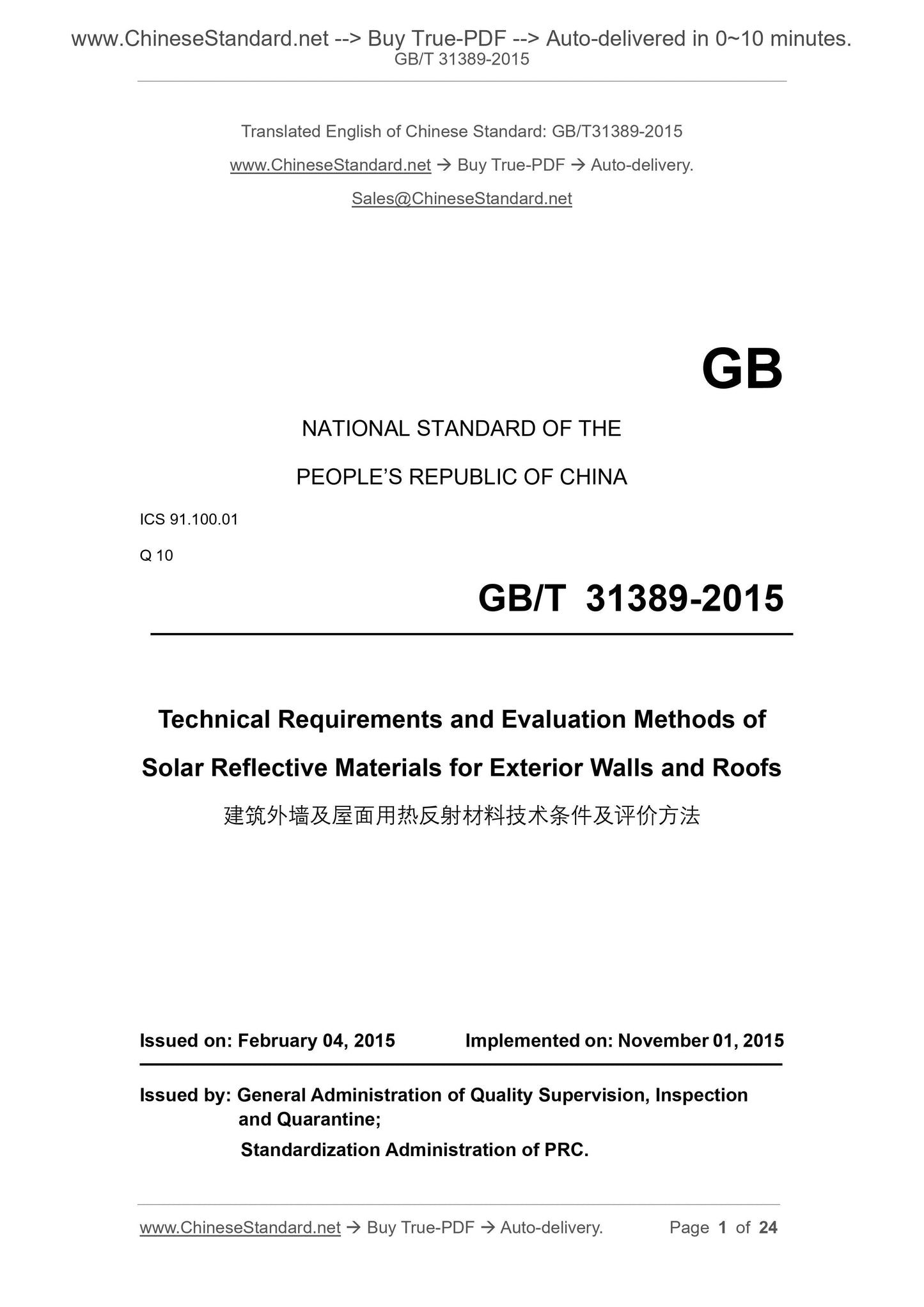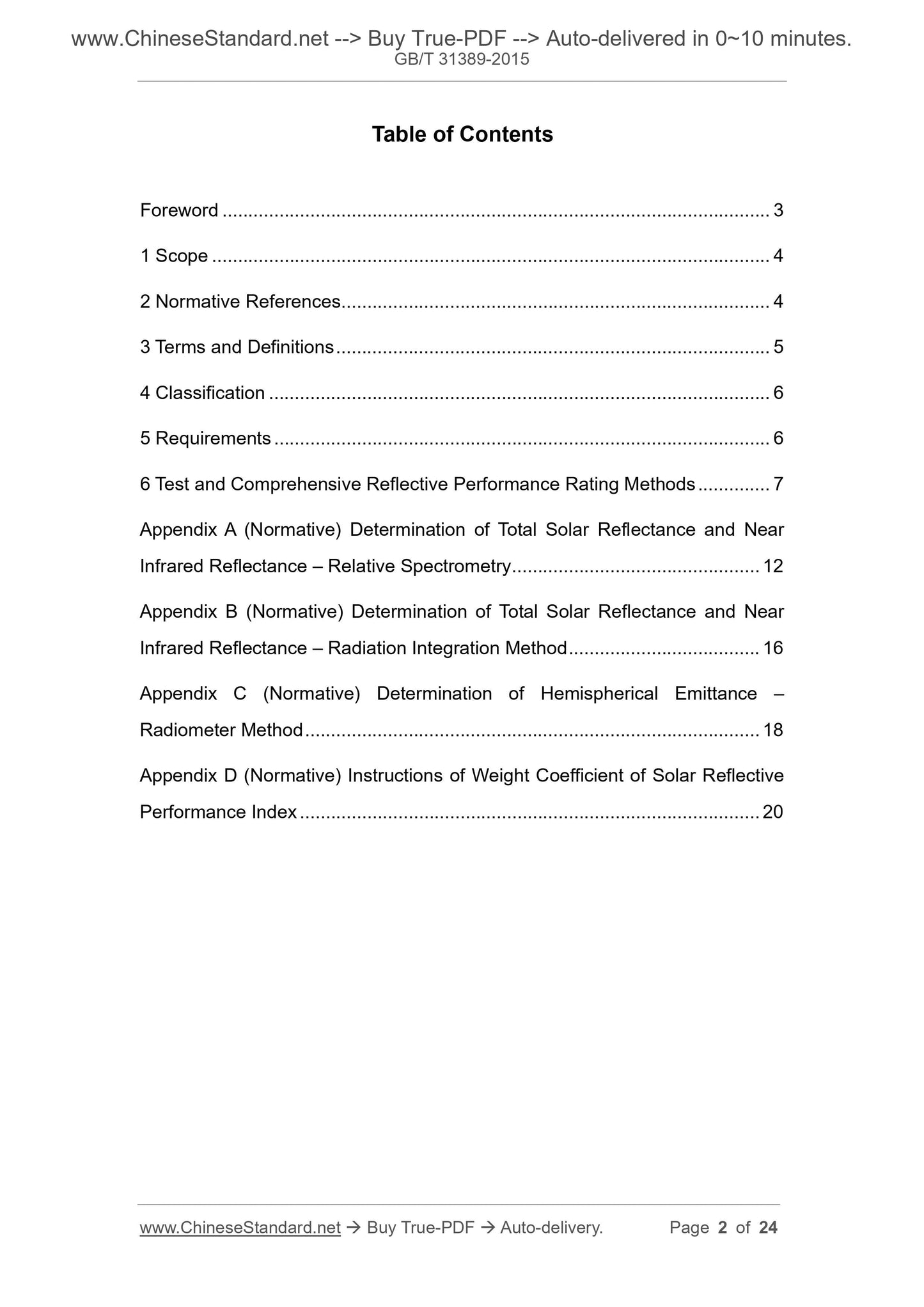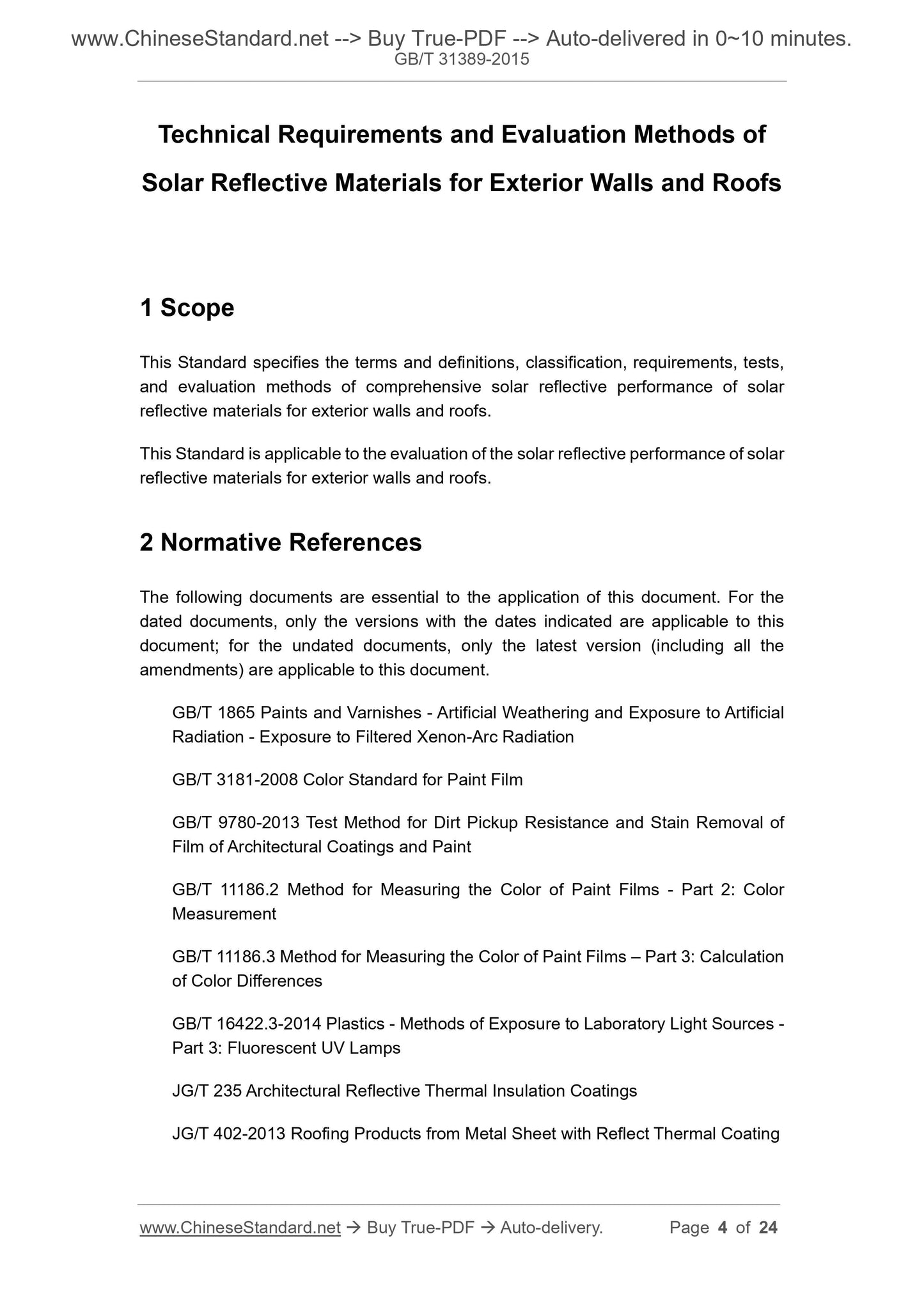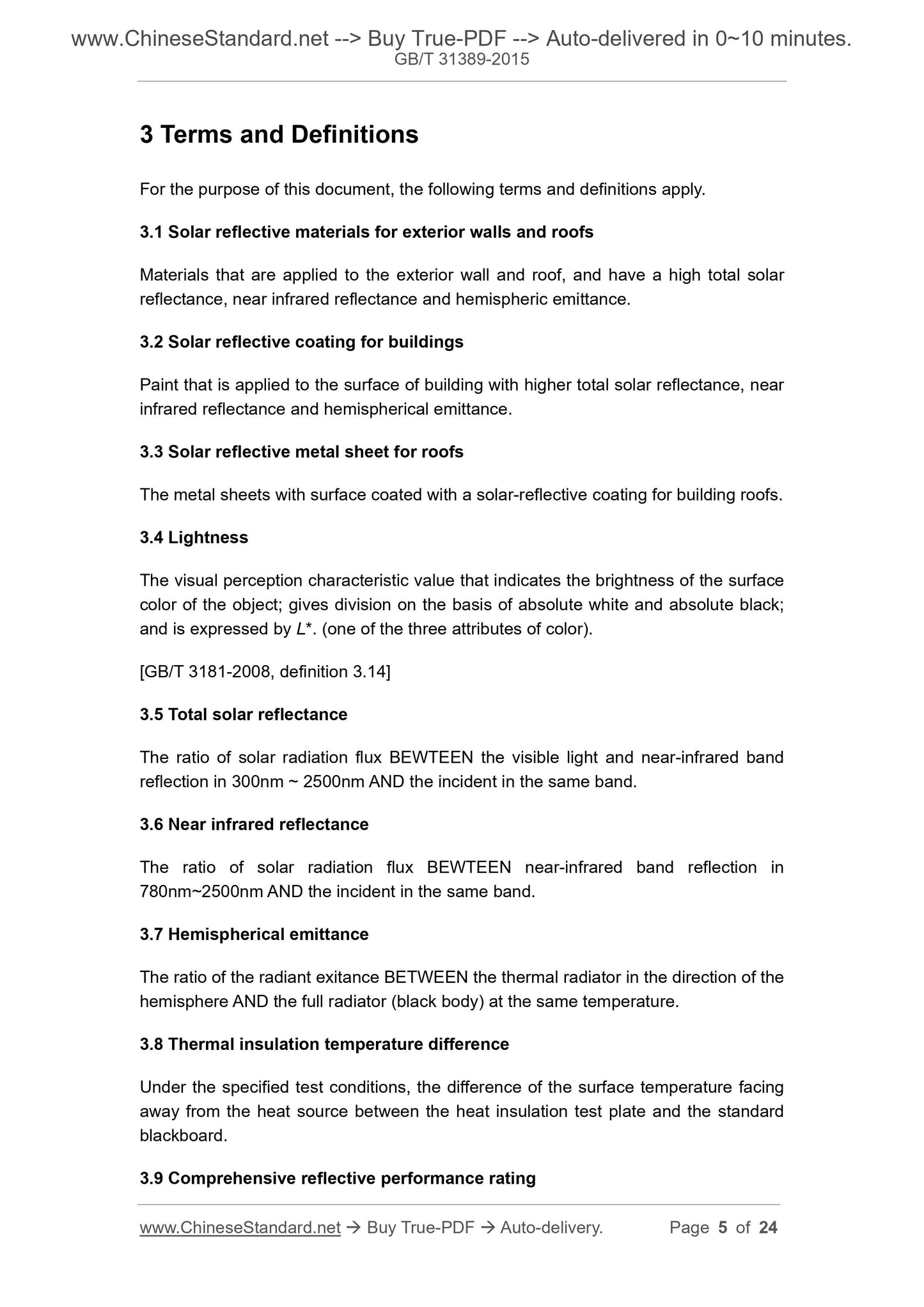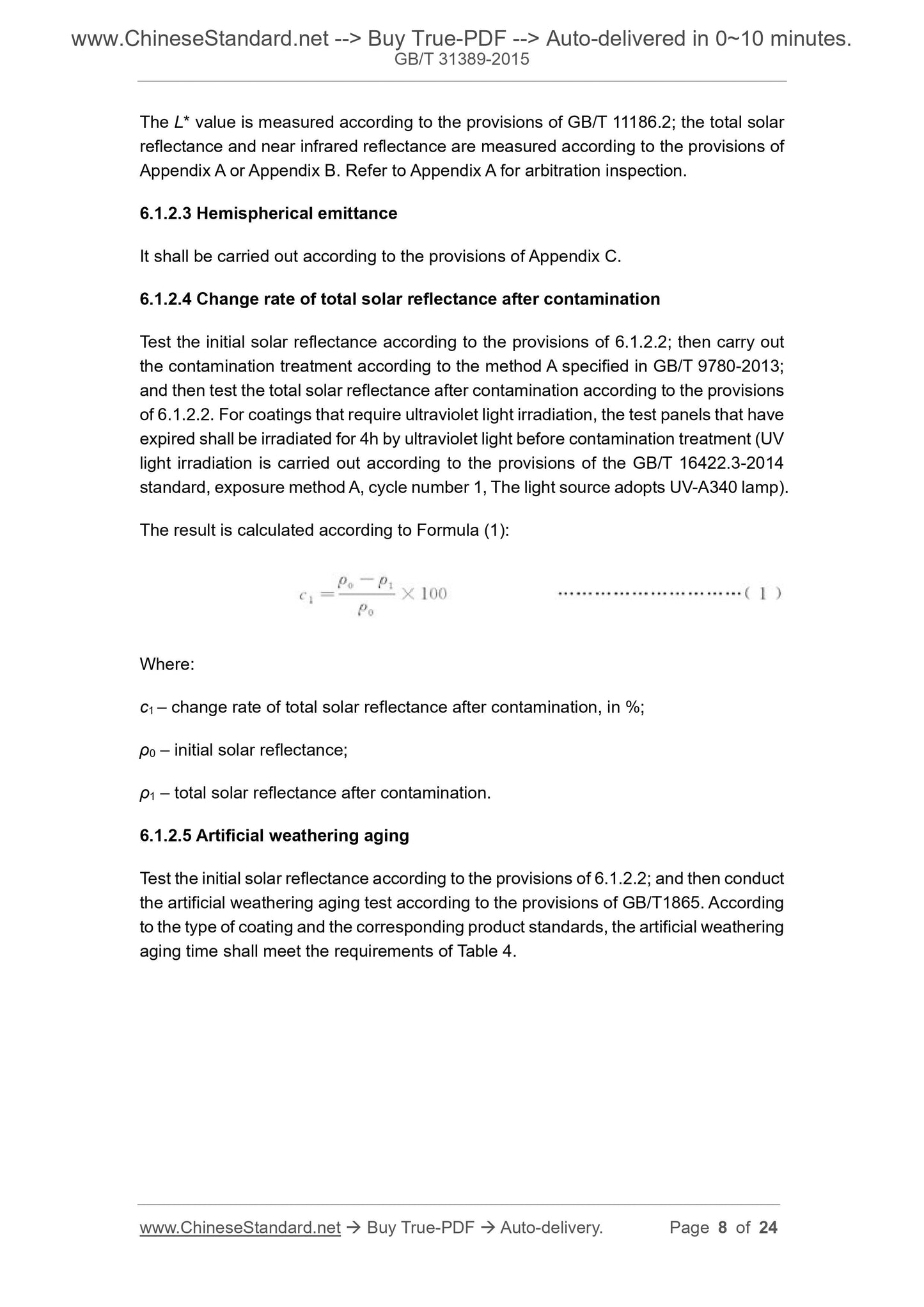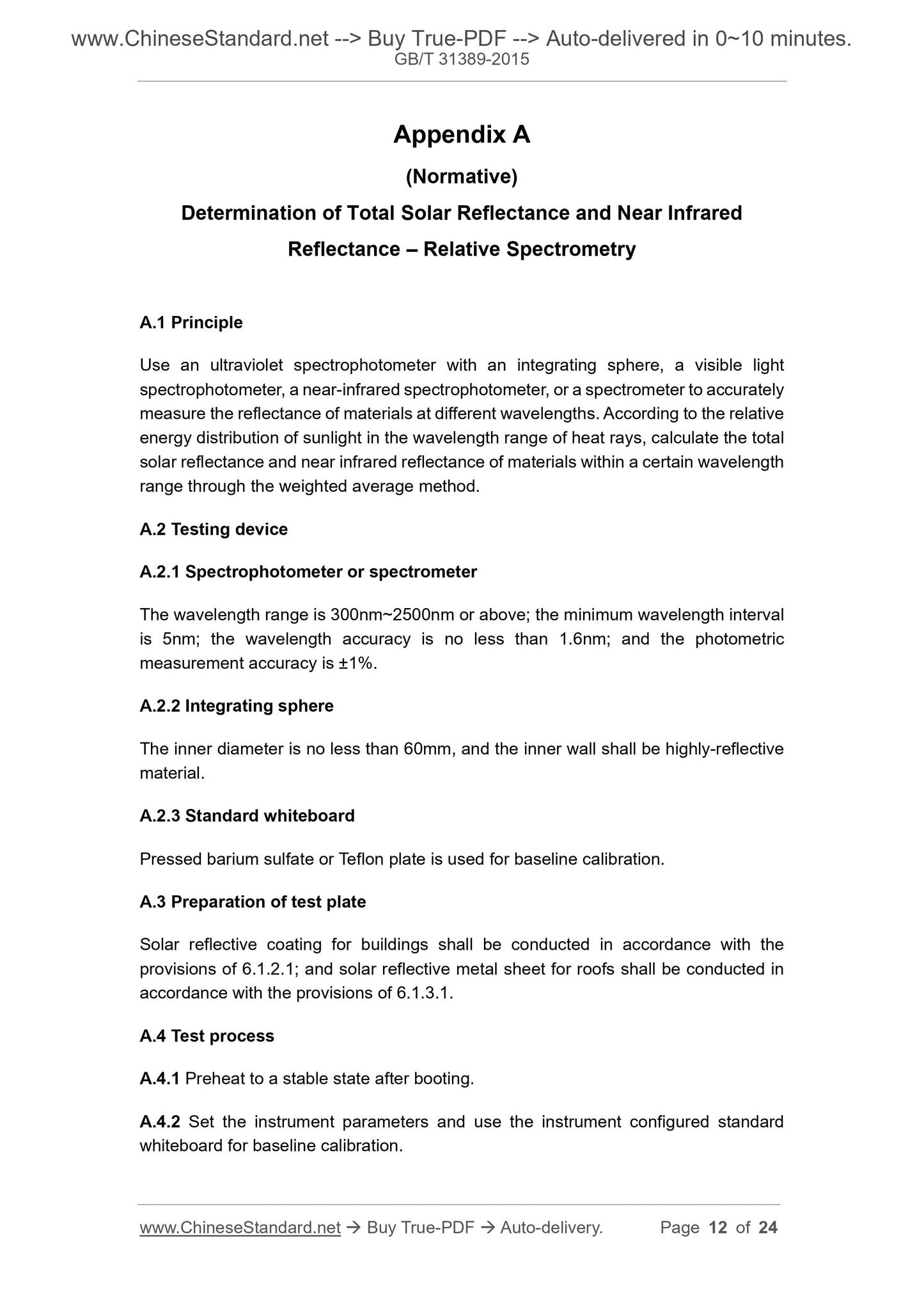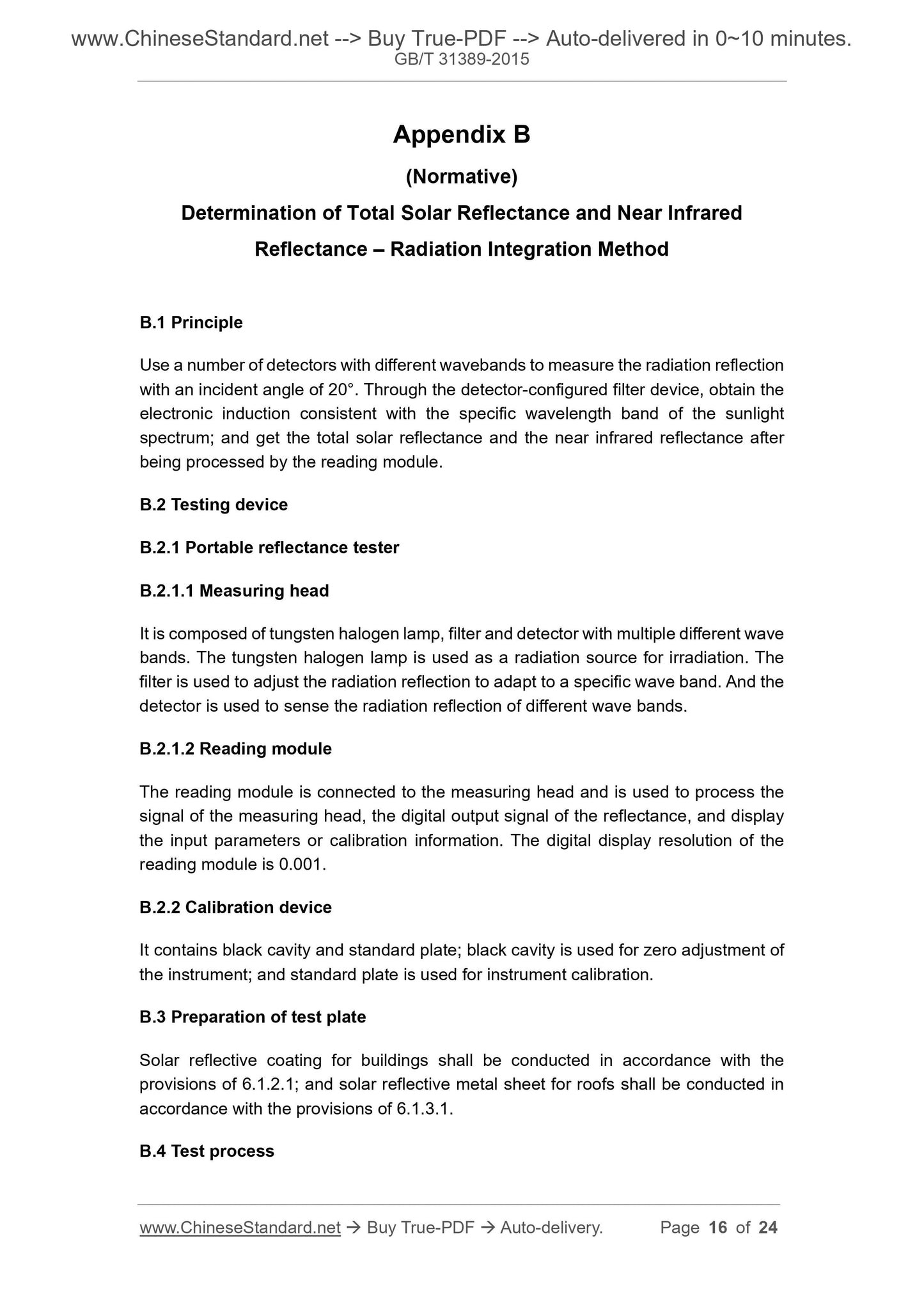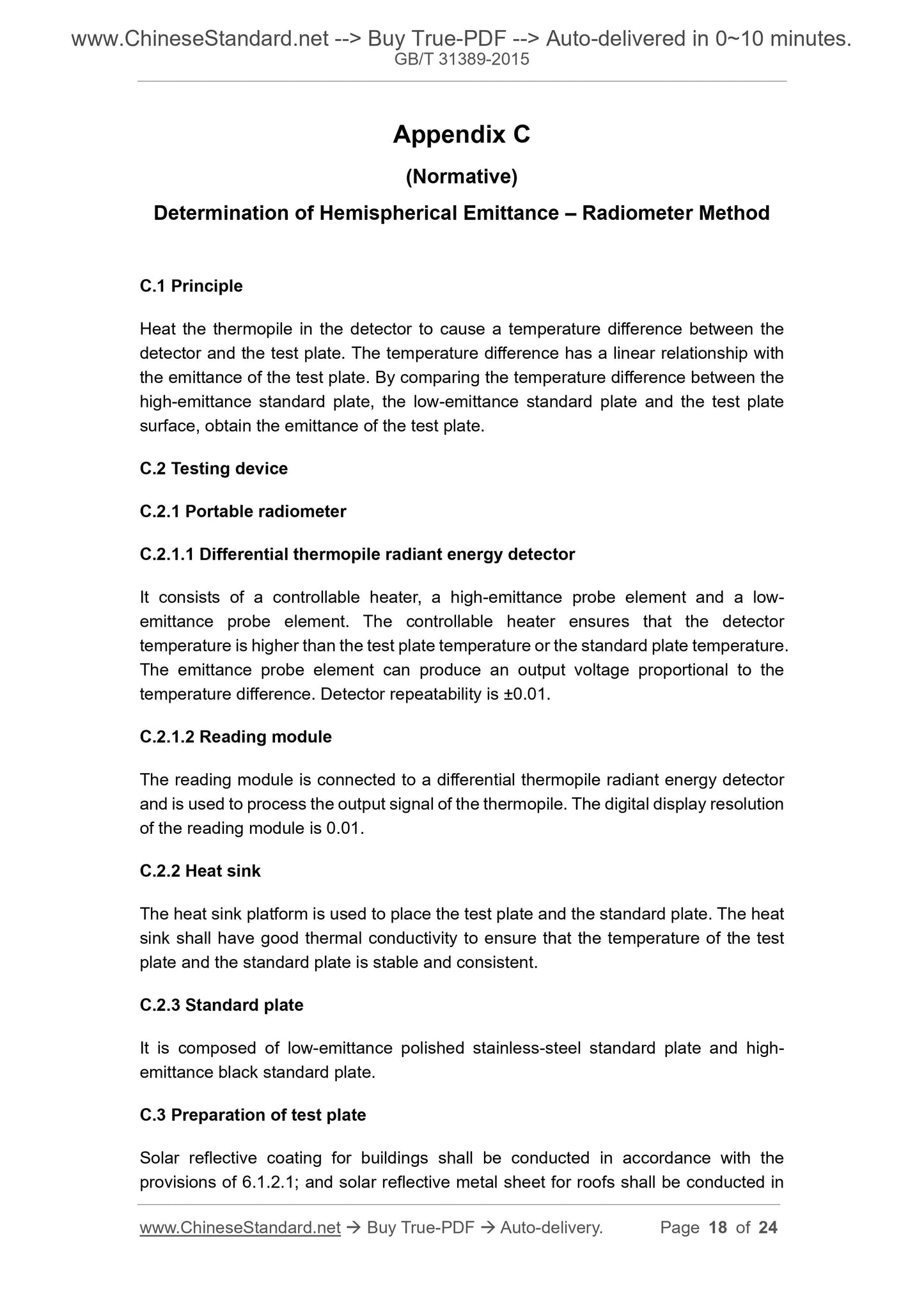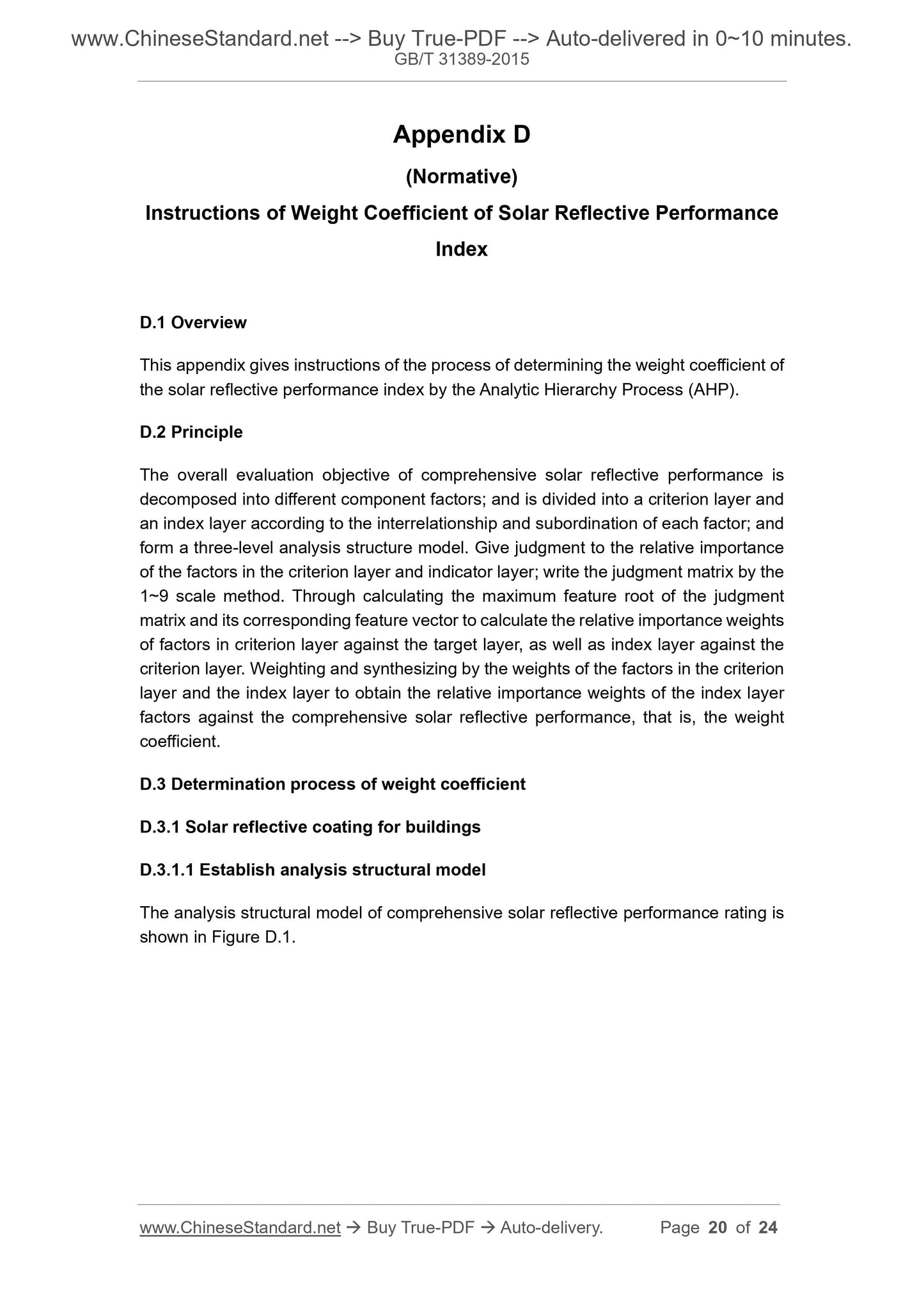1
/
of
9
www.ChineseStandard.us -- Field Test Asia Pte. Ltd.
GB/T 31389-2015 English PDF (GB/T31389-2015)
GB/T 31389-2015 English PDF (GB/T31389-2015)
Regular price
$210.00
Regular price
Sale price
$210.00
Unit price
/
per
Shipping calculated at checkout.
Couldn't load pickup availability
GB/T 31389-2015: Technical Requirements and Evaluation Methods of Solar Reflective Materials for Exterior Walls and Roofs
Delivery: 9 seconds. Download (and Email) true-PDF + Invoice.Get Quotation: Click GB/T 31389-2015 (Self-service in 1-minute)
Newer / historical versions: GB/T 31389-2015
Preview True-PDF
Scope
This Standard specifies the terms and definitions, classification, requirements, tests,and evaluation methods of comprehensive solar reflective performance of solar
reflective materials for exterior walls and roofs.
This Standard is applicable to the evaluation of the solar reflective performance of solar
reflective materials for exterior walls and roofs.
Basic Data
| Standard ID | GB/T 31389-2015 (GB/T31389-2015) |
| Description (Translated English) | Technical Requirements and Evaluation Methods of Solar Reflective Materials for Exterior Walls and Roofs |
| Sector / Industry | National Standard (Recommended) |
| Classification of Chinese Standard | Q10 |
| Classification of International Standard | 91.100.01 |
| Word Count Estimation | 19,177 |
| Date of Issue | 2015-02-04 |
| Date of Implementation | 2015-11-01 |
| Quoted Standard | GB/T 1865; GB/T 3181-2008; GB/T 9780-2013; GB/T 11186.2; GB/T 11186.3; GB/T 16422.3-2014; JG/T 235; JG/T 402-2013 |
| Regulation (derived from) | National Standards Bulletin 2015 No. 3 |
| Issuing agency(ies) | General Administration of Quality Supervision, Inspection and Quarantine of the People's Republic of China, Standardization Administration of the People's Republic of China |
| Summary | This Standard specifies the building facades and roof with heat reflective material terms and definitions, classification, requirements, testing and performance evaluation method of comprehensive heat-reflective. This Standard applies to building facades and roof with heat reflective properties of heat reflective material evaluation. |
Share
